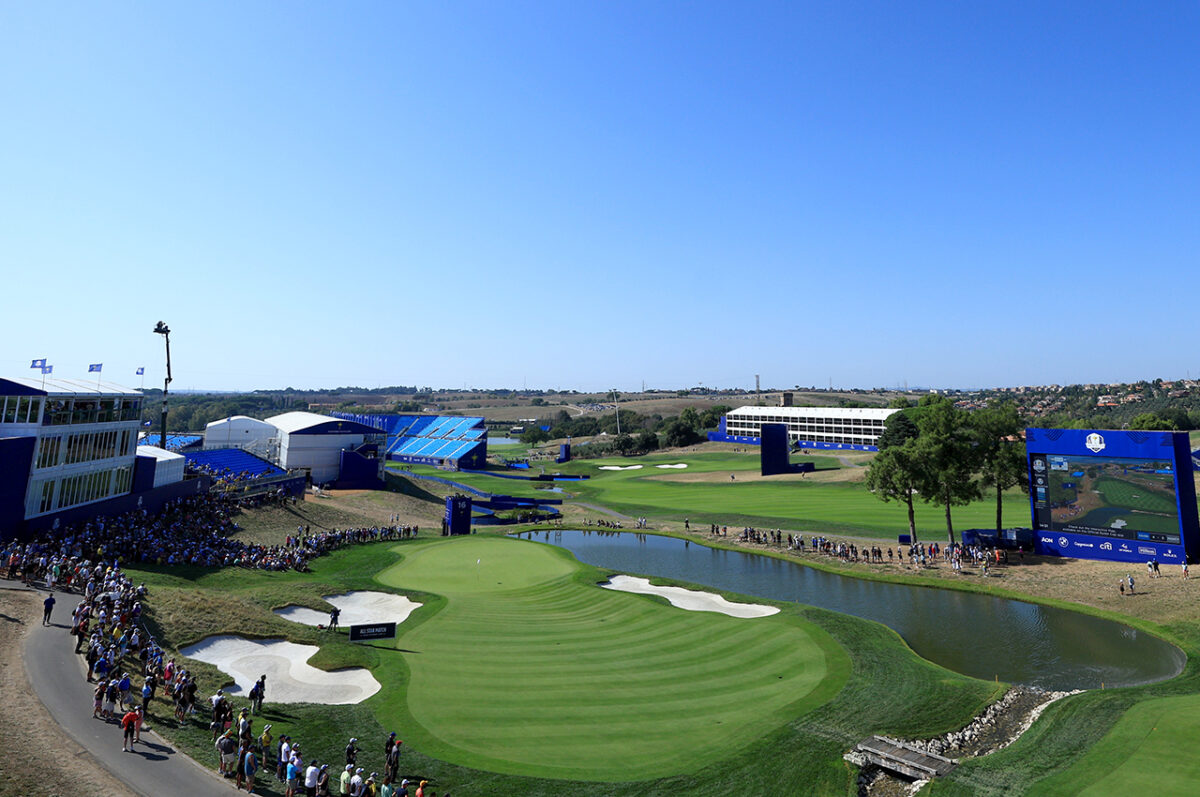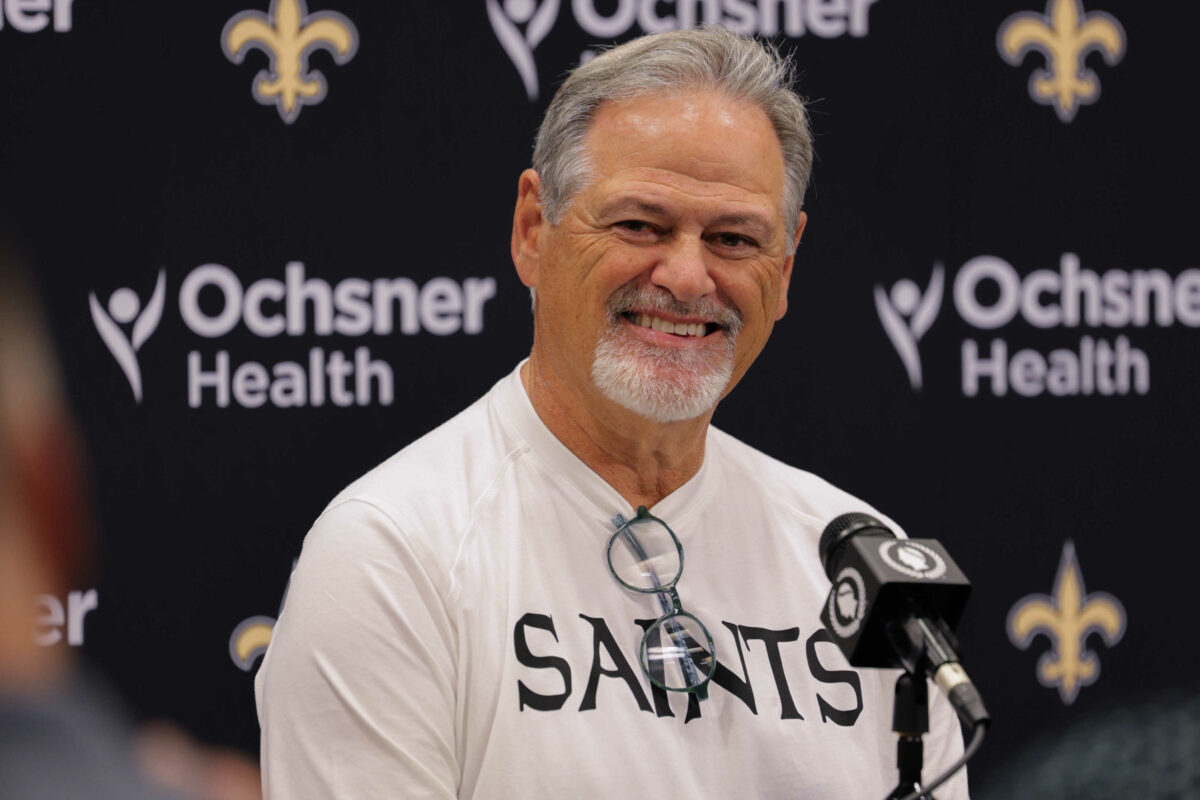[anyclip-media thumbnail=”https://cdn5.anyclip.com/W7Wk14oB6a832FGH8ARe/1695835132671_248x140_thumbnail.jpg” playlistId=”undefined” content=”PHNjcmlwdCBzcmM9Imh0dHBzOi8vcGxheWVyLnBvcHRvay5jb20vYW55Y2xpcC13aWRnZXQvbHJlLXdpZGdldC9wcm9kL3YxL3NyYy9scmUuanMiIGRhdGEtYXI9IjE2OjkiIGRhdGEtcGxpZD0iazQzdm8yenJncnh1ZW50YmhhenRlcnNoamE0ZWN1dGYiIHB1Ym5hbWU9IjE5OTgiIHdpZGdldG5hbWU9IjAwMTZNMDAwMDJVMEIxa1FBRl9NODMyNyI+Cjwvc2NyaXB0Pg==”][/anyclip-media]
Drivable par 4s are the most interesting holes in the pro game. Measuring somewhere south of 350 yards, the best of them entice the game’s top players to grab driver – or sometimes 3-wood, and in a few cases with the longest hitters, even a driving iron – and smash the ball onto the green in pursuit of an eagle, birdie at worst.
There is, of course, a flip side: bogeys, double bogeys, humiliation and a tumble down the scoreboard when things don’t work out as planned.
These short par 4s are sometimes called half-par holes, but even pros who only halfway commit or halfway execute are prone to full-blown scorecard disasters. And with so many options and strategies available – especially when factoring in match play – the short par 4s are where the fun will begin at this week’s Ryder Cup in Rome.
It’s a whole different galaxy of distance and options than encountered by most amateur players, who are far more likely to experience the thrill or despair of a somewhat drivable par 3 than a reachable par 4. Tour players are a different kind of animal, with the advantage typically tilted to the biggest guns in what used to be a knife fight.
Each year we see several drivable par 4s send PGA Tour pros into fits. Always in the spotlight is No. 10 at Riviera and its almost unhittable green. It’s the same story at No. 17 at TPC Scottsdale’s Stadium Course, with water in play left and a tucked Sunday pin location – undoubtably a better strategic hole than the amphitheater par-3 16th that has gained so much fame in recent decades. These holes and dozens of others have oversized effects on eventual prize payouts.
Edoardo Molinari gets the European fans going for Viktor Hovland’s tee shot down 16 at Marco Simone #RyderCup pic.twitter.com/b7aghPyEg4
— Andy Roberts (@AndyRobertsGolf) September 27, 2023
In recent years, even the major championships have embraced their drivable par 4s. No. 6 at Los Angeles Country Club thrilled and confused in this year’s U.S. Open – Wyndham Clark just missed the green with a driving iron in the final round but produced a brilliant up-and-down from the gunch for birdie en route to victory. Likewise, Justin Thomas grabbed control of the playoff at the 2022 PGA Championship with a 3-wood blast that carried a creek to bound onto the putting surface of No. 17 at Southern Hills. Glory beckons on these short holes.
This week’s Ryder Cup at Marco Simone Golf and Country Club in Rome promises such fireworks with several drivable par 4s. The fifth measures just 302 yards, but a pond guards the approach. No. 11 clocks in at 329 yards with a deep depression to the right of the green to gobble up wayward aggression. Both of these holes are within range for these Ryder Cuppers, but at what risk?
But 5 and 11 are mere warmups for No. 16, where plenty of high-pressure matches are likely to end and some Ryder Cup dreams are apt to crater. Just 303 yards long, the 16th has a small pond guarding the right side of the green. The hole is within reach, but so is the water. It’s do or die with the world watching.
Ryder Cup: Check out Nos. 5 and 11 in the yardage book
A bunker plopped into the center of the fairway some 235 yards off the tee only complicates things, as does the water crossing 60 yards short of the putting green. Wary or wise players can lay up short of the center bunker and still hit a wedge into the green, or they can try the more unlikely path of carrying the bunker yet remaining short of the creek to set up an even shorter wedge approach – don’t count on too many players attempting that route.
Or … they can fire away at the green. It’s just right there, within reach, tucked between three bunkers and the acqua. Coming so late in the matches, it could be the one decision and one swing that decides who is the GOAT and who is the scapegoat.

No. 16 has seen its share of splashdowns in the Italian Open since the course was redesigned by Dave Sampson and European Golf Design, with American architect Tom Fazio involved as a consultant hired by the club. Most notably, Rory McIlroy pushed his tee ball into the drink while in contention at last year’s Italian and eventually finished fourth. Will that memory provide motivation or scar tissue for Europe’s highest-ranked player and arguably the best driver of the golf ball of his generation?
Of course, not all tee shots that miss the 16th green will find the water. Some might land in a bunker, or tall rough on a downhill slope with the pond beyond, or even the closely cropped fairway approach. The players and their stats masters have to factor if playing a shorter second shot from any of those areas is more advantageous than playing a full wedge from 120 yards back in the fairway. Yes, the goal is to drive the green, but most players who try won’t find the putting surface, instead relying on a spot of luck and their elite short games.
Ryder Cup format matters, too. In the fourball matches – two-man teams with each man playing his own ball, and the lowest score for each team counts – plan to see at least one player on each side swinging for the green on the short par 4s, perhaps after his partner lays up safely. Things are more interesting in foursomes, in which the alternate-shot format often focuses on not leaving your partner in a bad spot. Then the gloves come off in singles, each man (and his team of advisors) having to choose the best route to birdie or better by considering his strengths versus those of his opponent as well as his own bravado versus his own demons.
There are so many options, so many possible outcomes. The realistic scores range from 2 to 6. Expectations are high, as are demands on length plus precision multiplied by some unknown confidence factor.

Both team captains were titans of the precision and confidence parts. European captain Luke Donald was never known for his distance off the tee but he climbed to No. 1 in the world, and American captain Zach Johnson proved to be the master of the layup by never going for a par-5 green in two en route to his 2007 green jacket. What will be their marching orders? Bet that reams of data will be analyzed figuring out go versus no-go.
There’s no doubt today’s professionals can reach the green of any of the short par 4s at Marco Simone, even guys such as American Brian Harman, who dominated this year’s British Open with a mix of precision iron play and gutsy putting. Short in comparison to Ryder Cup bombers such as McIlroy or European rookie Ludvig Aberg, Harman is still more than capable of driving the ball 300 yards downhill. But will he try? Better question: Should he?
On No. 16 in particular with the hopes of two continents on the line, it’s distance versus control, carpet bombing versus a sniper sneaking up on you. Expect to see eagle putts that knock opponents onto their heels, and also know there might be watery crashes. Hang on to your headcovers.
[lawrence-auto-related count=5 tag=451197960]







